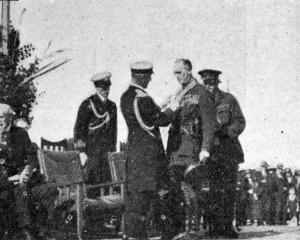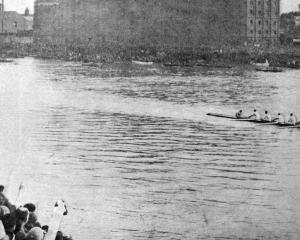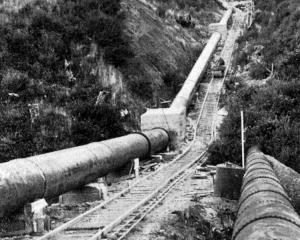
Mr Glendining was born in Dumfries, Scotland, in 1841. After completing a public school education in his native place, he served an apprenticeship to the drapery trade, and in 1862 sailed in the ship Evening Star for Dunedin. In August of the same year he joined with Mr John Ross in the same purchase of a retail drapery business in Princes Street. The shop stood just where Messrs Brown, Ewing, and Co.’s premises now are, and the business was disposed of to that firm four years later. Messrs Ross and Glendining then entered the wholesale business, and established themselves in Stafford Street. The business progressed rapidly, and in 1879 the partners entered upon the manufacturing business in the Roslyn Woollen Mills. Keen business insight, shrewd judgement, and vigorous enterprise led to the steady extension of all the firm’s activities, till they built up, it is not too much to say, a world-wide reputation for their manufactures. Their business was converted several years ago into a company which possesses 40 acres of ground in the Kaikorai Valley, 15 acres of the property being taken up by the mill premises and the reservoirs. Messrs Ross and Glendining were not only the manufacturers of wool into the finished product; their enterprise led them to grow their own wool. To enable them to do this they secured large station properties, their Lauder and Blackstone Hill stations containing about 120,000 acres, and the Barewood Station 30,000 acres. These runs at one time carried as many as 80,000 to 90,000 sheep. Mr Glendining was for many years an elder of Knox Church, and took a leading part in the erection of the present splendid building. He was also a member of the Presbyterian Church Board of Property, and he habitually made the Presbyterian Church generally, and Knox Church in particular, the channel of his generous benevolences. The greater part of his charity was distributed quite privately, but three instances of his wise and generous liberality are known to the public, and will always be gratefully remembered in connection with his name. The Winter Garden in the Botanic Gardens represents a gift to the community that was at once expressive of Mr Glendining’s love for flowers and of his love for the city of his adoption. He built the extensive Knox Church Sunday School buildings at the corner of King and Frederick streets, and he built and equipped and largely supported the large Presbyterian Orphanage at Anderson Bay, known as Glendining Home.
Australian mice plague
Does the Government fully realise the serious nature of the mice plague? (asks the Sydney Morning Herald of a recent date). This question is being asked by farmers, and asked with the anxiety of men suffering tremendous loss, and faced with even greater trouble. Despite the reports that have been published, it is maintained that only those who have seen what is actually happening in the infested districts can understand the extent of the plague. To the city community the devastation that is being wrought, the prevalence, boldness, and destructiveness of the mice, is incredible, while there is no comprehension of the repulsiveness of the whole thing. Millions upon millions of mice are over-running a large tract of country. The area principally affected is said to be Riverina, and along the Lachlan. Mice have appeared in other parts of the west, but so far not to the same extent. The country about Parkes, Bogan Gate etc., is badly infested, and there seems no indication of an abatement of the pest. There has never been a plague of mice as bad as this, nor does one appear to have lasted as long. It is now two months since the mice appeared in numbers, and they are as bad as ever, and apparently extending over a larger area of the country. So far the earnest hope that they will disappear as rapidly as they came, as has been the case in past years, remains a hope only. The mice are going strong, although disease amongst them is reported from some centres. — ODT, 25.6.1917.
• COPIES OF PICTURE AVAILABLE FROM ODT FRONT OFFICE, LOWER STUART ST, OR WWW.OTAGOIMAGES.CO.NZ












